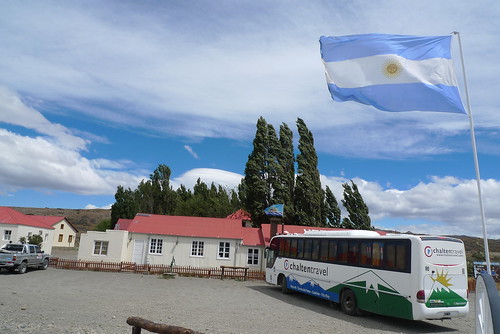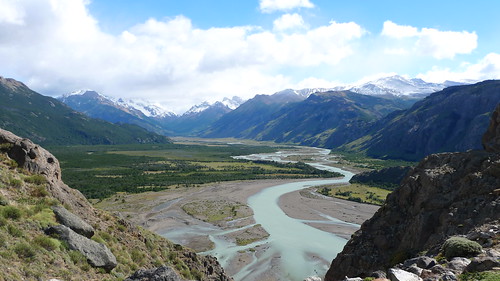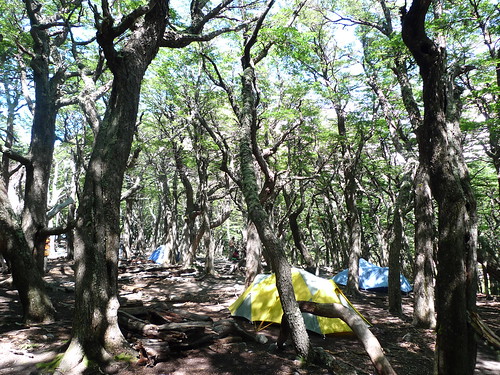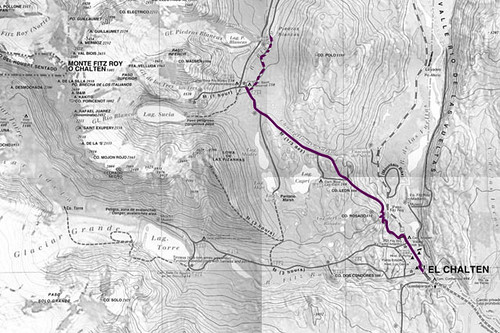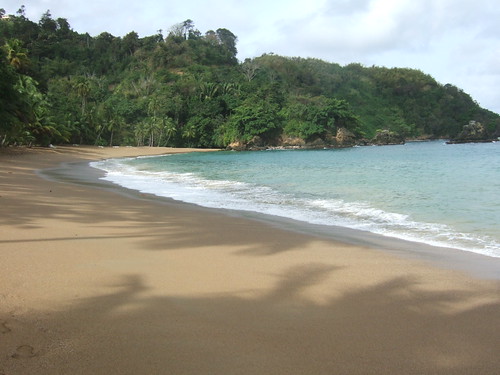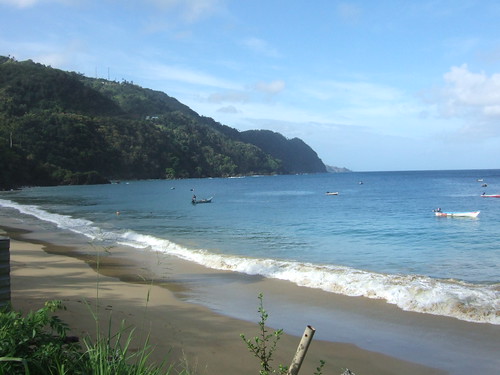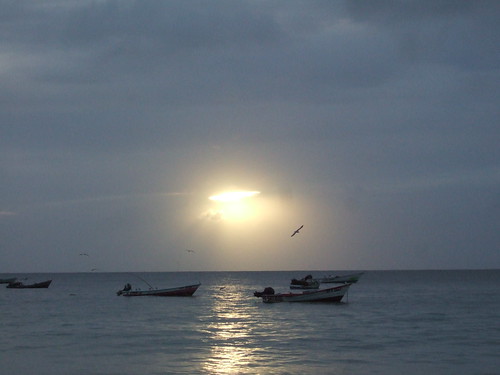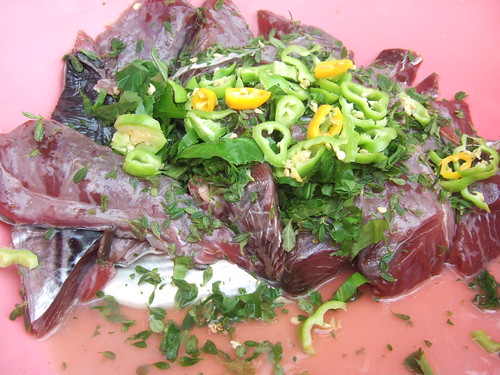I am excited but at the same time nervous. I’m geared up and waiting for the rest of my group outside Rancho Grande Hostel to begin our first day of hiking. Today’s plan is to hike along Chorillo del Salto and get our first glimpse of Monte Fitz Roy, one of the two that tower over El Chalten in this part of Argentina’s Patagonia. I am carrying about thirty pounds worth of clothes, my sleeping bag and our toiletries, while the Dr. is carrying our tent with his own gear. We’ve split our provisions between us, but I still made sure he carried the heavier jjajang tuna cans.
Yesterday, I was antsy during the five-hour drive from El Calafate to El Chalten. When I started to see Glacier Viedma up front, the largest glacier on the eastern slopes of the Andes, I turned to see if my companions were awake. My heart thumped: I made it! I made it to Patagonia! Rain flecked my window and I thought, Rain all you want now but please, please stop for the next five days. I am reminded that the name Chalten comes from a Tehuelche word meaning “smoking mountain”, due to a cloud that usually forms in the top.
We all stopped by the National Parks office to get an introduction and to listen to the rules of the park before the bus dropped us off at Rancho Grande where we had reservations for four bunk beds. Our humble room will be one of the many reminders of our hike in the Spanish Pyrenees back in 2006. It’s the beginning of peak season and we were surrounded by people who were also ready to hike: tall backpacks leaned against the walls and boots stacked up by the main door. Some of them we’ll encounter again on the trail and all of them we’ll share this Patagonian experience with.
We start walking towards the yellow house at the end of the road. The sun is striking at 10am and there is barely a cloud in the sky. I quietly hope that it stays that way. Here in Santa Cruz, Argentina, the weather is finicky and unpredictable. From reading Greg Crouch’s Enduring Patagonia before I left New York City, I learned that the wind will be our enemy. We start slow and up; my shoulders getting used to the weight on my back. I’m bundled up, but I’m hot and I know if I remove my fleece, I’d have to put it back on again when I turn the next corner. The trail is well-marked but rough. The soil is very dry and padded with small rocks and I can’t stop to take photographs of the dots of yellow and purple flowers along the way because there are others behind me.
We reach our first viewpoint where we could see the swirls of the Chorillo River. At last, rest. I’m surprised at how green everything is. I imagined tumbleweeds rolling along the flat plains while the wind whistled in the background. It hasn’t been an hour yet and Patagonia is already throwing surprises at me. We mostly hike narrow paths through the forest until the trail finally opens up where we walk on cliffs and then onto flat land with small ponds.
All of a sudden, there it is: Monte Fitz Roy and its ever-recognizable shape. I know because I’ve spent five months planning this trip for the group and I have seen numerous photos of its grandeur and glory. Right now, I can’t believe I’m finally looking at it in person. Its name was bestowed by explorer Perito Moreno after the Beagle’s captain, Robert Fitzroy, who sailed the area around 1834. Even though it’s not even half the height of the Himalayas, its granite makes climbing it harder even for the most experienced. More than a hundred people summit Mount Everest a day, but only one successfully ascends Monte Fitz Roy a year.
Everyone is taking photos and it takes a few tries and more energy than I can muster to jump for one of my Cia photos. I haven’t worn my sweater in the last hour and I already have a criss-cross tan below my neck. I want to stay and savor the view even though I know there will be more.
At Camp Poincenot, we pick a spot where the boys set up our two tents. We stretch and get used to our backs without all the weight and we eat our first energy bars for lunch. Because it was the middle of the afternoon, we decide to take a quick walk to see Lago Piedras Blancas where the glacier truly looks like flowing water frozen in time. It’s a much easier hike without our packs, but not less rewarding.
Back in camp, we begin to unwind and rest for the night–just in time when that swish of a cloud around Fitz Roy start to look like it’s going to make its way down. The clouds are more gray and we feel some rain coming. We are all surprised that the hike up here took less than four hours, but while we cook and eat our first meal of vegetable Jambalaya, miso soup and Korean tuna, we know that it was enough for today.
Day 1 itinerary:
Related post/s:
Monte Fitz Roy and Lago Piedras Blancas photos on Flickr
Route 40 drive photos on Flickr from El Calafate to El Chalten
I highly recommended Enduring Patagonia as a must-read
